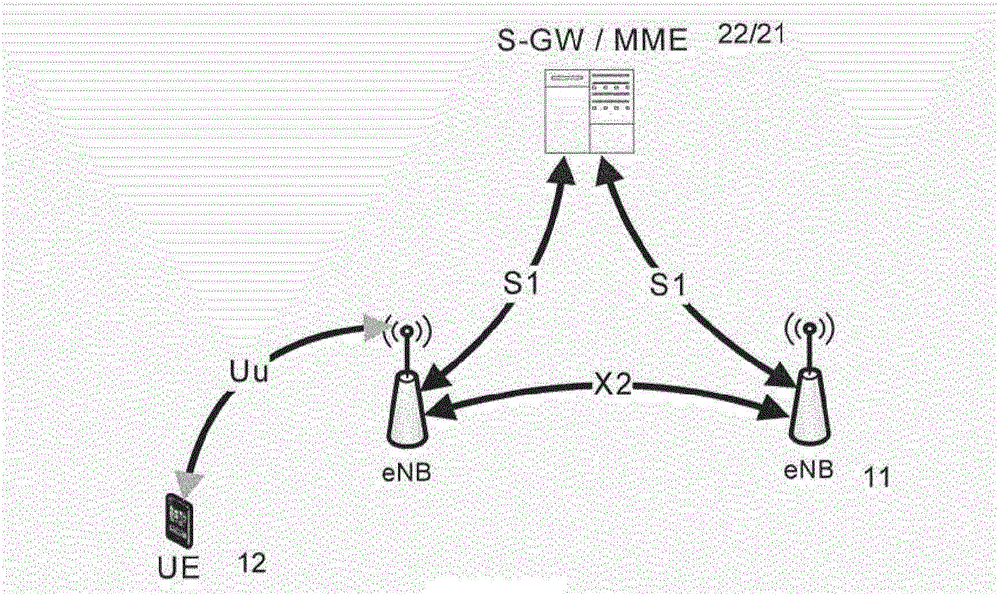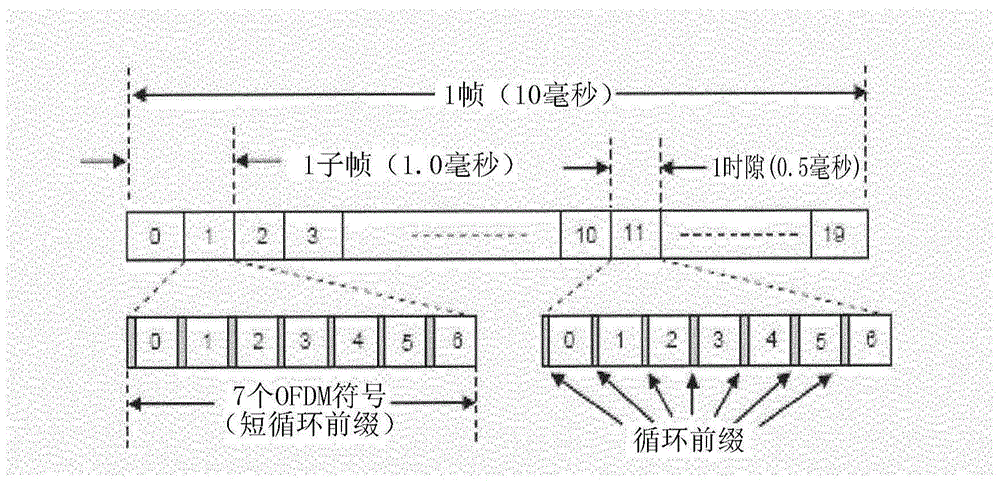Control channels for wireless communication
A technology for control channels and wireless communication, applied in directions such as wireless communication, transmission path sub-channel allocation, signaling allocation, etc., can solve problems such as number reduction and blocking, and achieve the effect of a well-balanced and simple implementation
- Summary
- Abstract
- Description
- Claims
- Application Information
AI Technical Summary
Problems solved by technology
Method used
Image
Examples
no. 1 approach
[0181] In the first embodiment, the network configures a set of PRB pairs for each of the 4 DCI message candidates. An example is given in Table 1(a), where the column "PRB pair" identifies the 12 pairs of PRBs numbered in frequency order (whether lowest-highest-first is unimportant) Numeric index for each pair.
[0182]
[0183] Table 1(a): Independent configuration of DCI message candidates, equal and non-overlapping
[0184] A pseudo-random selection is then made for each candidate. As an example, this can lead to the following PRB pairs selected for each DCI message candidate: 1, 4, 8, 11, or possibly: 2, 4, 7, 12, respectively. Using one of these will allow the DCI message to be sent in a PRB pair close to the best PRB pair if the channel conditions vary slowly with PRB.
[0185] exist figure 1 Another configuration is shown in (b), where the number of PRBs in each set is large and overlaps. This may not confer any particular advantage.
[0186]
[0187] Tabl...
no. 2 approach
[0212] The second embodiment is based on the first embodiment, but the configuration is done by indicating the DCI message candidate set to which a given PRB pair belongs. (Here, "DCI message candidate set" expresses the same information as each "DCI message candidate set" in the earlier table, but in a more compact form).
[0213] PRB pair
[0214] Table 2(a): Candidate configurations for each PRB pair.
[0215] Configuration signaling for this embodiment may be more efficient, but would mean that the same PRB pair in the list cannot be used for more than one candidate. Different lists may exist for each aggregation level.
[0216] Not all PRB pairs need to be assigned to a set, as shown in Table 3(b). This can help packing efficiency of DCI messages with aggregation level 1 or 2, or can allow different PRB pairs to be used for distributed transmission.
[0217] PRB pair
[0218] Table 2(b): Candidate configurations for each PRB pair, some of which are ...
no. 3 approach
[0222] The third embodiment is like the second embodiment except that resources are defined per eCCE and different sets of eCCEs can be allocated to different candidates.
[0223] In a particular variant, this can be achieved by defining a single set of resources (in terms of PRBs) for ePDCCH and applying different offsets for different candidates. As an example, this can be achieved by modifying 3.1 as follows:
[0224] Formula 3.6
[0225] here:
[0226] N eCCE,k is the total number of eCCEs allocated for potential usage of ePDCCH in subframe k.
[0227] o m,L An offset within a set of eCCEs in a subset of eCCEs for a given candidate and / or aggregation level is defined. It depends on m and / or L. This will determine how the eCCEs available for ePDCCH are distributed in the frequency domain. This can be a fixed offset for each (m,L) or can be configured.
[0228] Note that in the current LTE Release 10 specification, O m,L =m. Set O m,L ≈mN eCC...
PUM
 Login to View More
Login to View More Abstract
Description
Claims
Application Information
 Login to View More
Login to View More - Generate Ideas
- Intellectual Property
- Life Sciences
- Materials
- Tech Scout
- Unparalleled Data Quality
- Higher Quality Content
- 60% Fewer Hallucinations
Browse by: Latest US Patents, China's latest patents, Technical Efficacy Thesaurus, Application Domain, Technology Topic, Popular Technical Reports.
© 2025 PatSnap. All rights reserved.Legal|Privacy policy|Modern Slavery Act Transparency Statement|Sitemap|About US| Contact US: help@patsnap.com



